Key Takeaways
- Bone loss and cardiovascular disease share common pathways such as calcium imbalance and chronic inflammation.
- Low bone mineral density (BMD) predicts higher rates of heart attacks and strokes.
- Vitamin D deficiency, estrogen loss, and poor lipid profiles link fragile bones to clogged arteries.
- Lifestyle changes that strengthen bone also improve heart health - weight‑bearing exercise, balanced calcium/vitamin D intake, and smoking cessation.
- Medications like bisphosphonates and statins can have cross‑benefits, but monitoring is essential.
Bone Damage is a condition marked by reduced bone mass and weakened micro‑architecture, often culminating in fractures and chronic pain. While most people think of osteoporosis as a senior‑woman issue, emerging research shows that the same processes that erode bone can also damage blood vessels. This article uncovers the biology, the data, and the actionable steps you need to protect both your skeleton and your heart.
Understanding Bone Damage
Bone is a living tissue that remodels 24/7. Cells called osteoclasts break down old bone, while osteoblasts build new matrix. When the balance tips toward resorption, Osteoporosis develops as a systemic loss of bone mineral density (BMD) and structural deterioration. The World Health Organization defines osteoporosis by a BMD T‑score of -2.5 or lower, a threshold that affects roughly 200million people worldwide.
But bone loss isn’t isolated. The skeleton stores 99% of the body's calcium, and any disturbance in calcium homeostasis reverberates through the circulatory system.
The Heart’s Health: Cardiovascular Disease
Cardiovascular disease (CVD) encompasses conditions that narrow or block blood vessels, leading to heart attacks, strokes, and peripheral artery disease. Cardiovascular Disease is the leading cause of death globally, accounting for 31% of all mortality. Traditional risk factors include hypertension, high LDL cholesterol, smoking, and diabetes, yet a growing body of evidence adds bone health to this list.
Biological Pathways Linking Bone and Heart
Three main mechanisms create the bone‑heart bridge: calcium metabolism, chronic inflammation, and hormonal regulation.
Calcium Metabolism
Calcium Metabolism governs the absorption, storage, and excretion of calcium throughout the body is tightly regulated by parathyroid hormone (PTH), calcitonin, and vitamin D. When bone resorption accelerates, excess calcium floods the bloodstream, encouraging vascular calcification-hardening of arterial walls that mimics bone formation. A meta‑analysis of 12 cohort studies (n≈350,000) found a 17% higher risk of coronary artery disease in individuals with low BMD, independent of age and smoking status.
Inflammation
Both osteoclast activity and atherosclerotic plaque formation rely on pro‑inflammatory cytokines such as IL‑6, TNF‑α, and CRP. Persistent low‑grade inflammation fuels bone loss and destabilizes plaques, raising the chance of a heart attack. A 2023 longitudinal study in the Journal of Bone and Mineral Research reported that patients with CRP>3mg/L had a 1.4‑fold increased odds of both vertebral fractures and myocardial infarction.
Vitamin D Deficiency
Vitamin D Deficiency is a shortfall of 25‑hydroxyvitamin D below 20ng/mL, impairing calcium absorption and immune modulation simultaneously weakens bone and promotes arterial stiffness. In a randomized trial of 5,200 older adults, supplementing 2,000IU/day of vitamin D reduced fracture incidence by 12% and lowered systolic blood pressure by 3mmHg after two years.
Hormonal Influences
Estrogen protects both bone and vessels by reducing osteoclast activity and enhancing nitric oxide production. Post‑menopausal women experience a sharp rise in osteoporosis prevalence and a parallel increase in CVD events. Conversely, men with low testosterone often present reduced BMD and higher atherosclerotic burden.
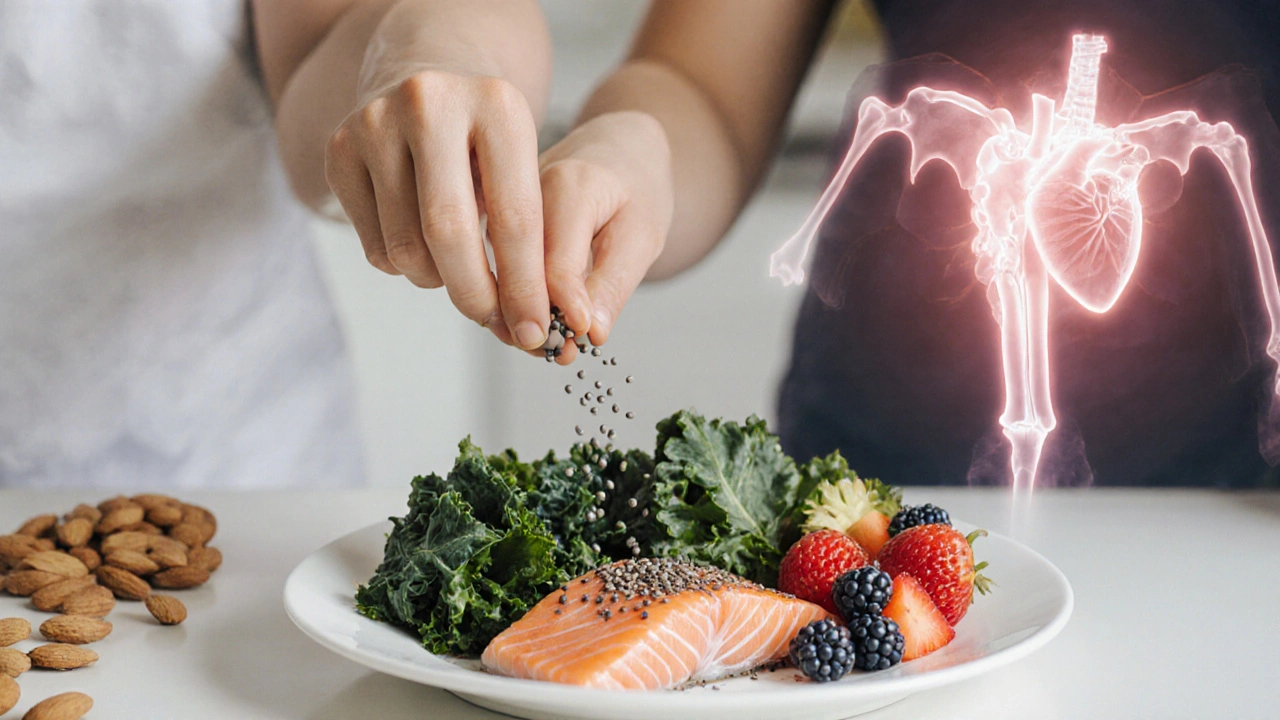
Clinical Evidence: What the Data Says
Large‑scale epidemiological databases provide the strongest proof of the bone‑heart connection:
- Fracture‑CVD Cohort (USA, 2018‑2022): 1.3million patients with hip fractures showed a 22% higher 5‑year rate of myocardial infarction compared to matched controls.
- UK Biobank (2021): Low femoral neck BMD predicted a 15% increase in stroke risk after adjusting for hypertension and diabetes.
- Meta‑analysis (2024, 30 studies): Each standard‑deviation drop in BMD raised CVD mortality by 9%.
These numbers underscore that bone health is not a side‑show; it’s a central marker for cardiovascular risk.
Practical Strategies: Protect Bone, Protect Heart
Because the pathways overlap, a single set of lifestyle changes can hit both targets.
Nutrition
- Calcium: Aim for 1,000mg/day (1,200mg for women >50). Dairy, fortified plant milks, leafy greens, and sardines are good sources.
- Vitamin D: 800-2,000IU daily, depending on sun exposure and baseline levels.
- Omega‑3 fatty acids: Reduce inflammation; include salmon, mackerel, or 1g algae oil.
- Limit sodium and added sugars: Both worsen hypertension and calcium loss.
Physical Activity
Weight‑bearing and resistance exercises stimulate osteoblasts while improving endothelial function. Aim for:
- 150minutes of moderate aerobic activity (e.g., brisk walking) per week.
- 2-3 sessions of strength training targeting major muscle groups.
- Balance drills (tai chi, single‑leg stands) to prevent falls.
Medication Considerations
Some drugs affect both systems:
- Bisphosphonates: Reduce fracture risk; emerging data suggest modest reductions in arterial calcification.
- Statins: Lower LDL and may modestly improve BMD by reducing inflammation.
- Selective estrogen receptor modulators (SERMs): Benefit post‑menopausal bone and can favorably impact lipid profiles.
Always discuss with a clinician before starting or stopping any medication.
Screening & Monitoring
Integrate bone health checks into cardiovascular risk assessments:
- Dual‑energy X‑ray absorptiometry (DXA) for BMD every 2-3years after age 50.
- Blood tests: calcium, 25‑hydroxyvitamin D, PTH, high‑sensitivity CRP.
- Annual blood pressure and lipid panel, with special attention to patients who have low BMD.
Comparison Table: Osteoporosis vs. Atherosclerosis
| Attribute | Osteoporosis | Atherosclerosis |
|---|---|---|
| Primary Tissue | Bone (trabecular & cortical) | Arterial wall (intima & media) |
| Typical Biomarker | Bone Mineral Density (g/cm²) | Coronary Calcium Score (Agatston units) |
| Major Risk Factors | Low calcium, Vitamin D deficiency, estrogen loss | High LDL, hypertension, smoking |
| Inflammatory Mediators | IL‑6, TNF‑α, RANKL | CRP, IL‑1β, MCP‑1 |
| Common Complications | Fractures, chronic pain | Myocardial infarction, stroke |
| Therapeutic Overlap | Bisphosphonates, SERMs | Statins, ACE inhibitors |
Related Topics
While this article focuses on the bone‑heart axis, several adjacent subjects deserve attention:
- Bone Mineral Density is the quantitative measure of mineral content in bone, expressed in g/cm², a key predictor for both fractures and vascular calcification.
- Chronic kidney disease, which disrupts calcium‑phosphate balance and accelerates both osteoporosis and arterial stiffening.
- Type 2 diabetes mellitus, a condition that raises advanced glycation end‑products in bone collagen and speeds up atherosclerosis.
Exploring these links in future posts will give you a fuller picture of how systemic health intertwines.
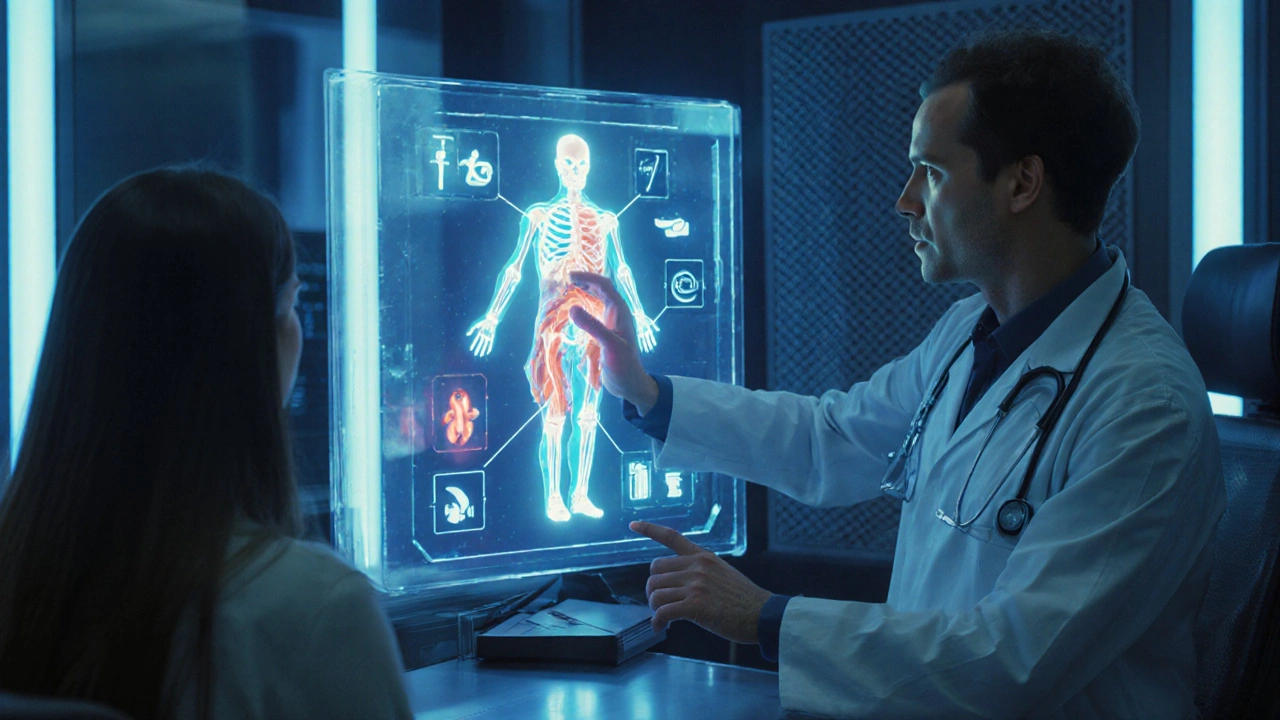
Frequently Asked Questions
Does having osteoporosis guarantee I’ll develop heart disease?
No. Osteoporosis raises risk, but it’s one of many factors. Genetics, lifestyle, and co‑existing conditions like hypertension still play larger roles.
Can calcium supplements increase my heart disease risk?
High doses of calcium without vitamin D can raise serum calcium spikes, potentially promoting vascular calcification. Aim for dietary calcium first and keep supplements under 1,000mg/day, paired with adequate vitamin D.
Is a DXA scan useful for heart health assessment?
Indirectly, yes. Low BMD on a DXA can flag elevated cardiovascular risk, prompting earlier lipid and blood‑pressure checks.
Do statins improve bone density?
Research shows modest BMD gains (≈1-2%) in patients on long‑term statins, likely due to reduced inflammation. However, they’re not a primary osteoporosis treatment.
What lifestyle change offers the biggest dual benefit?
Weight‑bearing exercise combined with adequate vitamin D and calcium intake. This cocktail strengthens bone, lowers blood pressure, and curbs inflammation.

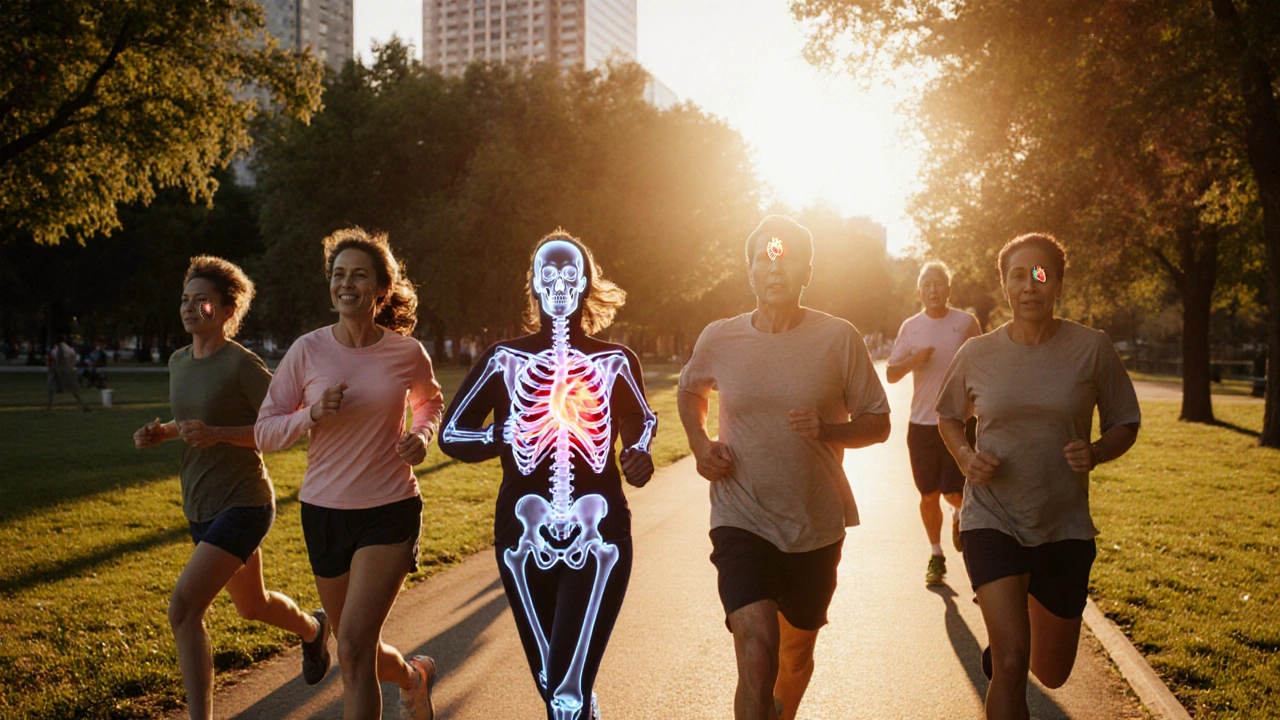
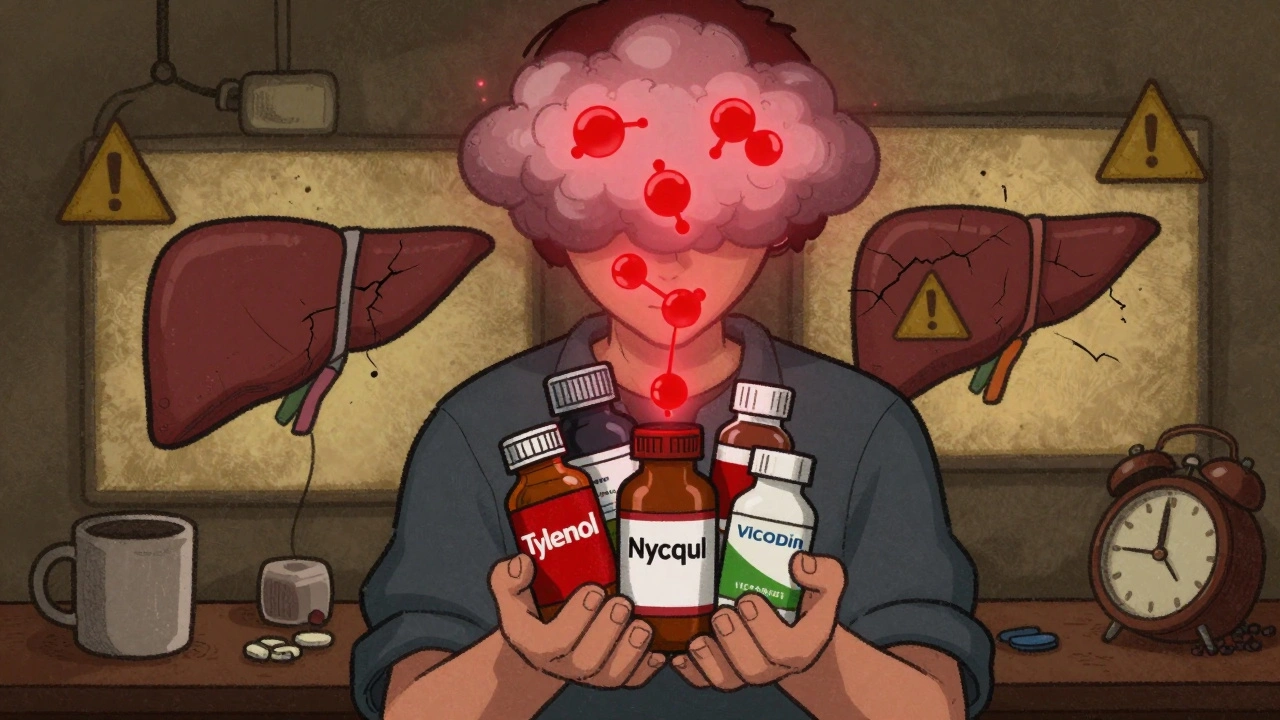


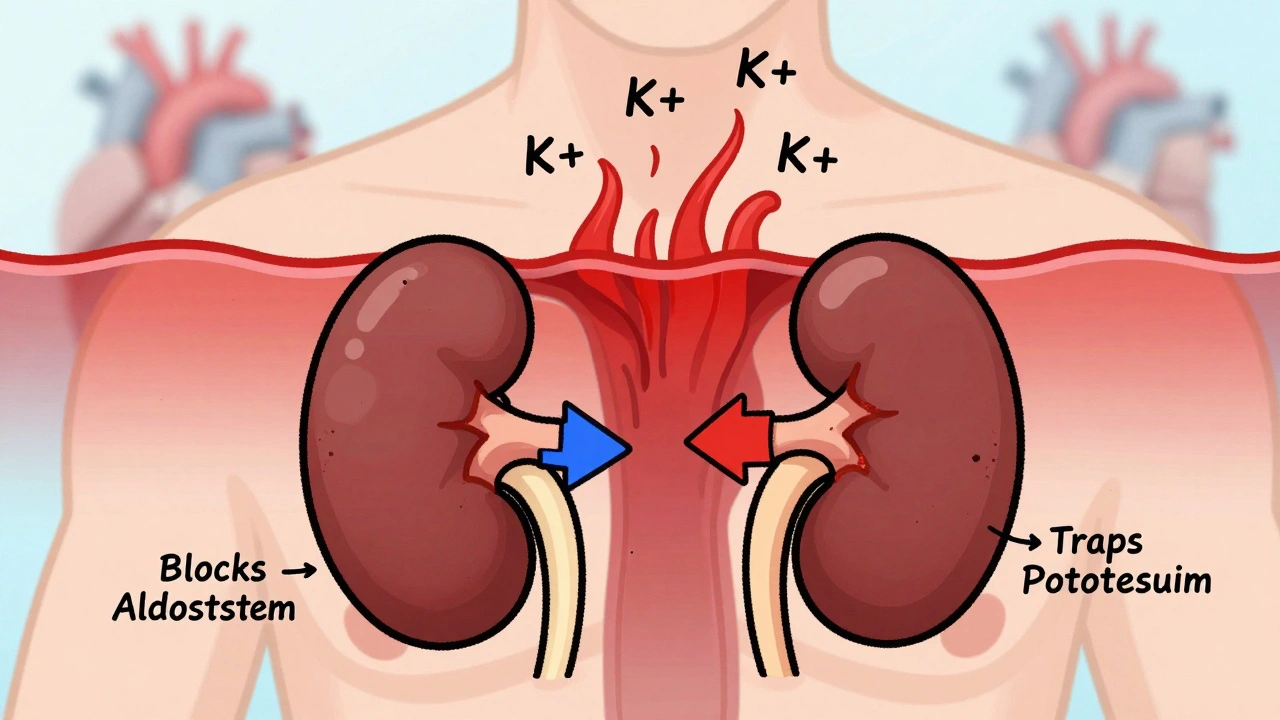
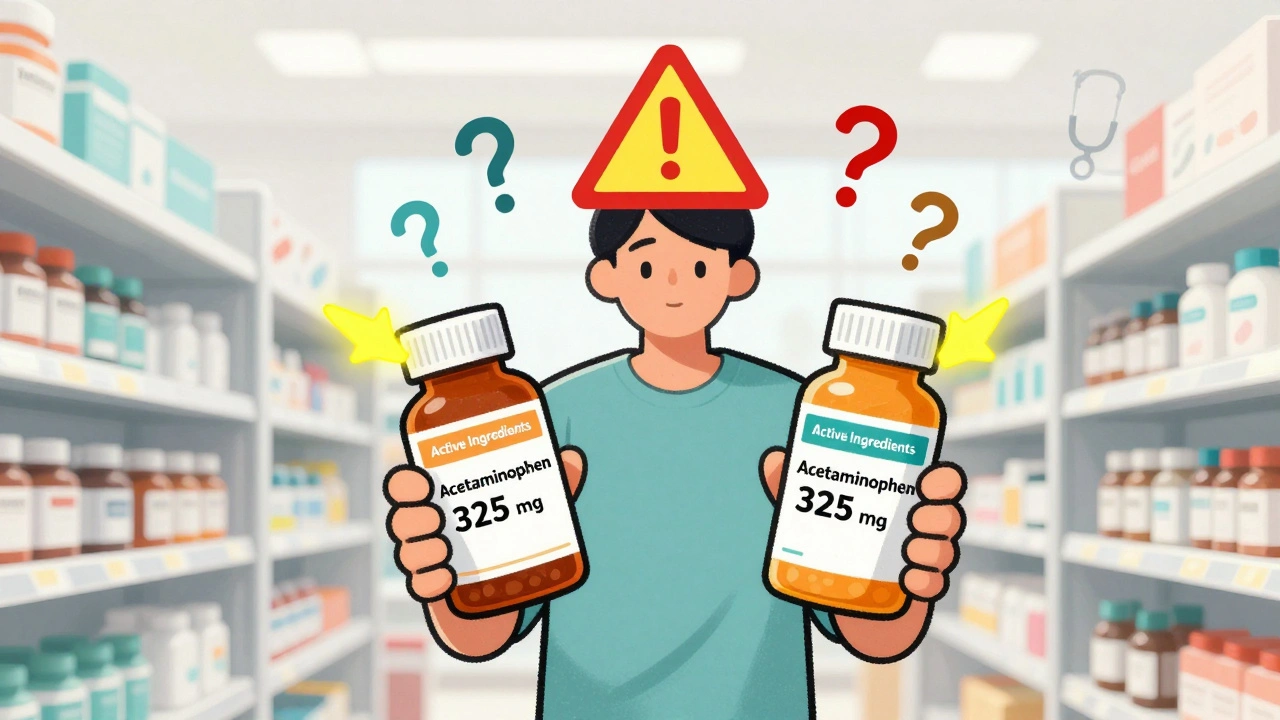
richard king
September 27, 2025 AT 18:51In the quiet theatre of our bodies, bones and arteries perform a clandestine duet, each echoing the other's fate. When calcium whispers from porous skeletons into the bloodstream, it builds not only sturdy frames but also silent plaques along arterial walls. The inflammatory chorus that drives osteoclasts also fans the flames of atherosclerosis, a duet of decay that thunders across decades. So the next time you hear the crack of a hip fracture, listen for the distant murmur of a heart in distress. Understanding this hidden liaison is the first step toward a holistic cure.
Dalton Hackett
October 9, 2025 AT 10:53Your metaphor about a clandestine duet is both poetic and scientifically apt, yet the underlying mechanisms deserve a more granular exposition. First, the calcium homeostasis axis is governed by parathyroid hormone, calcitonin, and active vitamin D, each delicately balancing bone resorption and deposition. When osteoclast activity outpaces osteoblast formation, liberated calcium enters the plasma, raising serum calcium modestly but persistently. This surplus does not simply dissolve; it precipitates as hydroxyapatite crystals within the intima, accelerating arterial stiffening. Moreover, the RANKL/OPG pathway, central to bone remodeling, cross‑talks with NF‑kB signaling in endothelial cells, fostering a pro‑inflammatory milieu. Elevated interleukin‑6 and tumor necrosis factor‑α, hallmarks of chronic inflammation, amplify both bone loss and plaque vulnerability. Epidemiological data, such as the Fracture‑CVD Cohort, show a 22% uptick in myocardial infarctions among hip fracture patients, underscoring a real‑world correlation. Randomized controlled trials further reveal that bisphosphonate therapy can modestly blunt the progression of coronary calcium scores, hinting at therapeutic crossover. Vitamin D supplementation, when dosed appropriately, not only fortifies skeletal mineral density but also modestly lowers systolic blood pressure, a dual benefit rarely highlighted. Hormonal shifts, especially estrogen deficiency post‑menopause, deprive both bone and vasculature of vasodilatory nitric oxide, accelerating calcific deposition. Conversely, testosterone replacement in hypogonadal men has been linked to incremental gains in BMD and a slight reduction in arterial plaque volume. Lifestyle interventions, such as weight‑bearing exercise, stimulate osteoblastogenesis while enhancing endothelial function via shear‑stress mediated nitric oxide release. Nutrition plays a pivotal role; diets rich in calcium, vitamin D, and omega‑3 fatty acids simultaneously support bone matrix formation and temper systemic inflammation. Importantly, clinicians ought to incorporate dual‑energy X‑ray absorptiometry into routine cardiovascular risk assessments for patients over fifty, an approach that bridges silos in preventive medicine. While the evidence is compelling, causality remains a tapestry of interwoven pathways rather than a single thread. Thus, interdisciplinary collaboration between endocrinologists, cardiologists, and primary‑care physicians is essential to translate these insights into practice. In sum, the bone‑heart axis is a multidimensional network where biochemical, mechanical, and hormonal signals converge, and acknowledging this convergence can reshape our preventive strategies.
William Lawrence
October 21, 2025 AT 00:40Oh great, just what we needed another reason to stress about our calcium intake. Because clearly the heart was just waiting for a broken femur to finally go out of style.
Grace Shaw
November 1, 2025 AT 13:26While I appreciate the levity, it is imperative to approach the bone‑cardiovascular relationship with scholarly rigor rather than dismissive sarcasm. The literature, as cited, demonstrates statistically significant associations that merit clinical attention. Accordingly, practitioners should integrate bone mineral density assessments into cardiovascular risk stratification protocols. Such a measured approach ensures that patients receive comprehensive preventive care.
Lila Tyas
November 13, 2025 AT 03:13Let’s get moving and keep those bones and hearts happy together!
Julia Phillips
November 24, 2025 AT 17:00Imagine a world where the crack of a bone is not a harbinger of heartache, but a call to unite nutrition, movement, and community support. From the bustling markets of Marrakech to the quiet suburbs of Manchester, the foods that fortify our skeletons-rich dairy, oily fish, leafy greens-also whisper promises of vascular health. When we share a traditional stew brimming with calcium and vitamin D, we are not merely feeding our bodies; we are weaving a tapestry of resilience that stretches from our hips to our coronary arteries. Let this cultural exchange remind us that caring for bone is, in essence, an act of caring for the heart of our societies.
Richa Punyani
December 6, 2025 AT 06:46Thank you for highlighting the cultural dimension; it reinforces the notion that dietary patterns rooted in tradition can serve dual protective functions. I wholeheartedly endorse incorporating fortified milks and cod liver oil into daily routines, especially for populations with limited sunlight exposure. Moreover, community‑based exercise programs that blend dance with resistance training can simultaneously improve bone density and endothelial function. By marrying tradition with modern science, we can craft a holistic preventive strategy that resonates across generations.
Bhupendra Darji
December 17, 2025 AT 20:33Spot on with the idea of interdisciplinary care – I’ve seen clinics where the endocrinologist, cardiologist, and physiotherapist sit down together to map out a patient’s plan. They review the DXA results, lipid profile, and workout schedule in one session, which cuts down on redundant appointments. It also helps patients understand how a single lifestyle tweak, like adding a daily walk, can boost both BMD and heart health. Let’s keep pushing for these integrated models, because the evidence is too compelling to ignore.
Robert Keter
December 29, 2025 AT 10:20Indeed, the convergence of osteology and cardiology paints a vivid portrait of systemic health, one where each cellular whisper reverberates through the architecture of the body; the calcium that fortifies our vertebrae can, when misdirected, lay down insidious deposits upon the arterial walls, thereby fostering a milieu ripe for atherosclerotic progression. It is paramount that we, as stewards of patient well‑being, do not compartmentalize these realms, but rather approach them with a holistic lens that appreciates the symphony of hormones, cytokines, and mechanical forces at play. Moreover, the literature abounds with studies-such as the UK Biobank analysis-demonstrating that a decrement in femoral neck BMD correlates with a measurable increase in stroke incidence, an association that persists even after adjusting for conventional risk factors. This compelling data underscores the necessity for routine bone health evaluations in individuals deemed at elevated cardiovascular risk, as well as the converse. In practice, prescribing weight‑bearing exercises like squats or kettlebell swings not only stimulates osteoblastic activity but also enhances endothelial shear stress, fostering nitric oxide production and vascular elasticity. Simultaneously, ensuring adequate vitamin D status through sunlight exposure or supplementation acts as a catalyst for calcium absorption while modulating inflammatory pathways. Let us, therefore, champion a dual‑pronged preventive strategy that harmonizes skeletal robustness with cardiovascular vitality, for the health of one inexorably supports the health of the other.